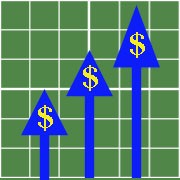When a business is sold or purchased, the transaction might involve an earnout provision. This is a contractual arrangement in which the seller receives additional payment in the future if certain financial goals are met. In other words, a portion of the price is contingent on the performance of the company after the sale.
Naturally, an earnout arrangement has important tax implications for both the seller and the buyer. This article focuses on the seller side of the equation.
In general, when you sell a business asset or stock for a gain with an earnout, you must report it as an installment sale, unless you choose to “elect out” of that type of treatment. When the installment sale rules apply, which is usually the case, the federal income tax regulations set up three different scenarios, each with different tax implications, for the seller. Here is a brief explanation of each one, followed by explanations and strategies for minimizing taxes:
Scenario 1: A sale for which the maximum possible selling price can be determined.
Scenario 2: A sale for which the maximum possible selling price cannot be determined but the time over which contingent payments are to be received can be determined.
Scenario 3: A sale for which neither the maximum possible selling price nor a definite payment term can be determined.
First Scenario: Maximum Sale Price Can be Determined
In this case, the maximum amount of sales proceeds that the seller can receive under the agreement is fixed. At the end of the year in which the business sale takes place, the earnout transaction is generally treated for federal income tax purposes as if the seller will receive the maximum possible payments at the earliest possible times.
Using this assumption, the seller’s installment sale gain and gross profit percentage are calculated. Then, part of each contingent payment is treated as tax-free recovery of the seller’s basis in the asset or stock, and the remainder of each payment is treated as taxable gain. If something happens that reduces the maximum possible sale price, the remaining price is refigured, and a new gross profit percentage is calculated for the remaining payments. What if the remaining maximum possible sale price is less than the seller’s unrecovered basis? The seller is allowed to claim a bad debt deduction for the difference at the time the remaining installment receivable becomes worthless. (Source: IRS Regulation 15a.453-1(c)(2))
Key Point: The rules in the first scenario are often unfavorable to the seller because they can accelerate the timing of taxable gains to a point that seems unfair. These rules can even be a deal breaker. In some cases, it might be necessary to negotiate a new agreement that does not include a maximum stated sale price (as described in the scenarios below) in order to achieve acceptable tax results for the seller.
Second Scenario: Fixed Payment Period but No Maximum Sale Price
When an earnout deal involves payments that extend over a fixed period of time but does not stipulate a maximum possible sale price, another set of tax rules applies. Here is a brief summary of the rules — assuming the seller uses the installment method of reporting:
- The seller’s basis in the asset or stock that is being sold is generally allocated in equal annual increments to each taxable year for which contingent payments will be received. However, if the deal specifies a component that changes over the years (for example, annual contingent payments based on a declining percentage of sales), the seller’s basis is generally allocated to the taxable years for which payments will be received using that arithmetic component.
- The seller receives the basis portion of each contingent payment tax-free. The remainder of each payment is taxable gain. (Source: IRS Regulation 15a.453-1(c)(3))
Key Point: The tax results under the rules for this scenario are often more acceptable to the seller than the results under the first scenario.
Third Scenario: No Maximum Sale Price and No Fixed Payment Period Either
Yet another set of tax rules applies when an earnout provision does not specify either a maximum possible sale price or a fixed payment period. In this scenario, the seller and buyer must first determine if a sale has actually occurred or whether the payments made by the buyer actually represent something else — such as royalties or rentals. Assuming that a sale has, in fact, occurred, the seller’s basis in the asset or stock that is being sold is generally recovered in equal annual increments over 15 years. The seller receives the basis portion of each contingent payment tax-free. The remainder of each payment is taxable gain. (Source: IRS Regulation 15a.453-1(c)(4))
Key Point: Depending on what the seller believes about the amount and timing of future earnout payments and how accurate those beliefs turn out to be, the tax results in the third scenario could turn out better or worse than the results in the second scenario. For example, if the seller correctly anticipates that earnout payments will actually last for only seven years, the tax results would usually be worse for the seller. In such a case, the seller may want to negotiate a new agreement that stipulates a maximum payment period of seven years (such as in the second scenario), even though doing so could put a lower ceiling on the contingent payments.
Conclusion: The tax implications of selling a business with an earnout arrangement can be complex and sometimes unfavorable. What we have explained in this article are the general rules for sellers, but you may qualify for a more taxpayer-friendly exception. To lock in the best tax results, consult with your tax adviser before finalizing any earnout transaction.






